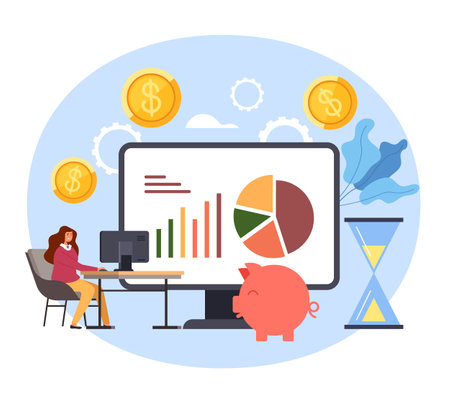1. Assess Your Debt Situation
Before you can create an effective debt repayment plan, you need to understand your current financial situation. Start by gathering all relevant information about your debts, including balances, interest rates, and minimum payments. This will give you a clear picture of what you owe and help you prioritize your repayment strategy.
How to Gather Your Debt Information
To assess your debt situation properly, follow these steps:
(1) List All Your Debts
Create a list of all outstanding debts, including credit cards, personal loans, student loans, car loans, and any other liabilities.
(2) Record Key Details
For each debt, note the following details:
| Debt Type | Lender | Balance | Interest Rate | Minimum Payment |
|---|---|---|---|---|
| Credit Card | Bank A | $5,000 | 18% | $150 |
| Student Loan | Lender B | $20,000 | 6% | $200 |
| Car Loan | Lender C | $10,000 | 5% | $300 |
(3) Check Your Credit Report
Your credit report can help ensure that you havent missed any debts. You can request a free credit report from major credit bureaus like Experian, Equifax, or TransUnion.
(4) Calculate Your Total Debt
Add up all your outstanding balances to determine the total amount you owe. This number will be essential in creating a realistic repayment plan.
The Importance of Knowing Your Debt Details
A thorough understanding of your debt situation allows you to make informed decisions. It helps you determine which debts to tackle first and whether you need to explore consolidation or refinancing options.
2. Set Clear and Achievable Goals
Setting clear and realistic goals is crucial for a successful debt repayment plan. Without specific objectives, it’s easy to lose focus and motivation. By defining your goals, you create a roadmap that helps you stay on track and measure your progress.
Why Setting Goals Matters
Having well-defined goals keeps you motivated and ensures that your debt repayment strategy aligns with your financial situation. It also helps you prioritize which debts to tackle first based on interest rates or urgency.
How to Define Your Debt Repayment Goals
(1) Identify Your Debt Priorities
Decide which debts need to be addressed first. Some common priorities include:
- Paying off high-interest credit cards first (avalanche method)
- Tackling smaller debts first to build momentum (snowball method)
- Eliminating debts with variable interest rates to reduce financial uncertainty
(2) Set a Realistic Timeline
Determine how long it will take to pay off your debt based on your current income and expenses. Consider setting short-term and long-term goals to keep yourself motivated.
| Goal Type | Description |
|---|---|
| Short-Term Goal | Pay off a specific credit card in six months |
| Long-Term Goal | Become completely debt-free in five years |
(3) Establish Milestones
Break down your repayment plan into smaller milestones. For example:
- Pay off 25% of total debt within six months
- Close one credit card account after full repayment
- Avoid taking on new debt during the repayment period
The Importance of Flexibility
Your financial situation may change over time, so its essential to adjust your goals as needed. Unexpected expenses or changes in income might require you to modify your timeline, but staying committed to your overall objective will keep you moving forward.

3. Choose a Repayment Strategy
Paying off debt efficiently requires a solid strategy. There are two popular methods you can use: the snowball method and the avalanche method. Each has its own benefits, so choose the one that best fits your financial situation and motivation style.
Snowball Method: Start Small, Build Momentum
The snowball method focuses on paying off the smallest debt first while making minimum payments on all other debts. Once the smallest debt is paid off, you roll that payment into the next smallest debt, creating a “snowball effect.”
Benefits of the Snowball Method
- Quick wins help keep you motivated.
- Provides psychological encouragement as debts disappear faster.
- Simple to follow and easy to maintain.
Avalanche Method: Save More on Interest
The avalanche method prioritizes paying off debts with the highest interest rate first while making minimum payments on others. This approach minimizes the total amount of interest paid over time.
Benefits of the Avalanche Method
- Saves more money in the long run by reducing interest costs.
- Faster overall debt payoff for those with high-interest loans.
- Ideal for people who are disciplined and focused on financial efficiency.
Comparison of Debt Repayment Strategies
| Method | Main Focus | Best For |
|---|---|---|
| Snowball Method | Paying off smallest debts first | People who need quick motivation boosts |
| Avalanche Method | Tackling high-interest debts first | Those who want to save more on interest |
Selecting the Best Strategy for You
Your choice depends on your financial goals and personality. If staying motivated is challenging, the snowball method might be better. If saving money on interest is your top priority, go with the avalanche method. No matter which approach you choose, stay consistent and committed to becoming debt-free.
4. Create a Budget and Cut Unnecessary Expenses
One of the most effective ways to speed up your debt repayment is by creating a solid budget and eliminating unnecessary expenses. By adjusting your spending habits, you can free up more money to pay off your debts faster.
How to Build a Budget for Debt Repayment
A well-structured budget helps you understand where your money is going and ensures that you allocate enough funds toward paying off your debt. Follow these steps to create a budget that works:
(1) Track Your Income and Expenses
Start by listing all sources of income and tracking every expense for at least one month. This will help you identify spending patterns and find areas where you can cut back.
(2) Prioritize Essential Expenses
Your essential expenses include housing, utilities, groceries, transportation, and minimum debt payments. Make sure these are covered before allocating money to other categories.
(3) Set a Fixed Amount for Debt Repayment
Decide on an amount you can commit to paying toward your debt each month. Try to allocate as much as possible while still covering your essential expenses.
Cutting Unnecessary Expenses
Once youve created a budget, look for ways to reduce discretionary spending. Small changes can add up over time and accelerate your debt repayment progress.
(1) Identify Non-Essential Spending
Review your expenses and categorize them into essentials and non-essentials. Some common non-essential expenses include dining out, streaming services, gym memberships, and impulse shopping.
(2) Reduce or Eliminate Unnecessary Costs
You don’t have to cut everything at once, but consider making adjustments such as:
- Cooking at home instead of eating out
- Cancelling unused subscriptions
- Shopping with a list to avoid impulse purchases
- Using public transportation or carpooling to save on gas
- Buying generic brands instead of name brands
(3) Reallocate Savings Toward Debt Repayment
The money saved from cutting unnecessary expenses should be redirected toward paying down your debt. The more you contribute each month, the faster youll become debt-free.
Example Budget Breakdown
A simple budget can help you visualize how much of your income is being used for necessary expenses versus discretionary spending. Heres an example:
| Category | Percentage of Income |
|---|---|
| Housing & Utilities | 35% |
| Groceries & Essentials | 15% |
| Debt Repayment | 20% |
| Savings & Investments | 10% |
| Transportation | 10% |
| Lifestyle & Entertainment | 5% |
| Miscellaneous | 5% |
This breakdown is just an example—you can adjust it based on your specific financial situation.
5. Monitor Progress and Stay Motivated
Paying off debt is a journey, and staying on track requires regular check-ins and motivation. By monitoring your progress, celebrating small wins, and making necessary adjustments, you can keep yourself engaged and committed to your financial goals.
How to Track Your Debt Repayment Progress
Keeping an eye on your payments helps ensure that youre moving in the right direction. Here are some effective ways to track your progress:
(1) Use a Debt Payoff Tracker
A visual tracker can help you see how much debt youve paid off and how much remains. You can use a spreadsheet, an app, or even a simple chart to mark milestones.
(2) Check Your Balances Monthly
Review your account balances at least once a month to confirm that payments are being applied correctly and to stay aware of your progress.
(3) Set Up Payment Reminders
Late payments can slow down your progress and lead to extra fees. Set up automatic payments or calendar reminders to avoid missing due dates.
Celebrate Milestones Along the Way
Paying off debt can feel overwhelming, so its important to celebrate small victories. Recognizing progress keeps you motivated.
(1) Reward Yourself for Each Goal Reached
Treat yourself when you pay off a certain percentage of your debt—just make sure the reward doesnt involve more spending.
(2) Share Your Success with Others
Telling friends or family about your progress can boost motivation and provide encouragement.
(3) Keep a Journal of Your Achievements
Writing down each milestone you reach helps reinforce positive habits and gives you something to look back on when motivation dips.
Adjust Your Plan as Needed
Your financial situation may change over time, so its important to be flexible with your repayment plan.
(1) Increase Payments When Possible
If you get a bonus, tax refund, or other unexpected income, consider putting extra money toward your debt to speed up the process.
(2) Reduce Expenses If Youre Falling Behind
If youre struggling to keep up with payments, review your budget and find areas where you can cut back temporarily.
(3) Refinance or Negotiate Better Terms
If interest rates drop or if youve improved your credit score, refinancing or negotiating lower interest rates with creditors might save you money.


